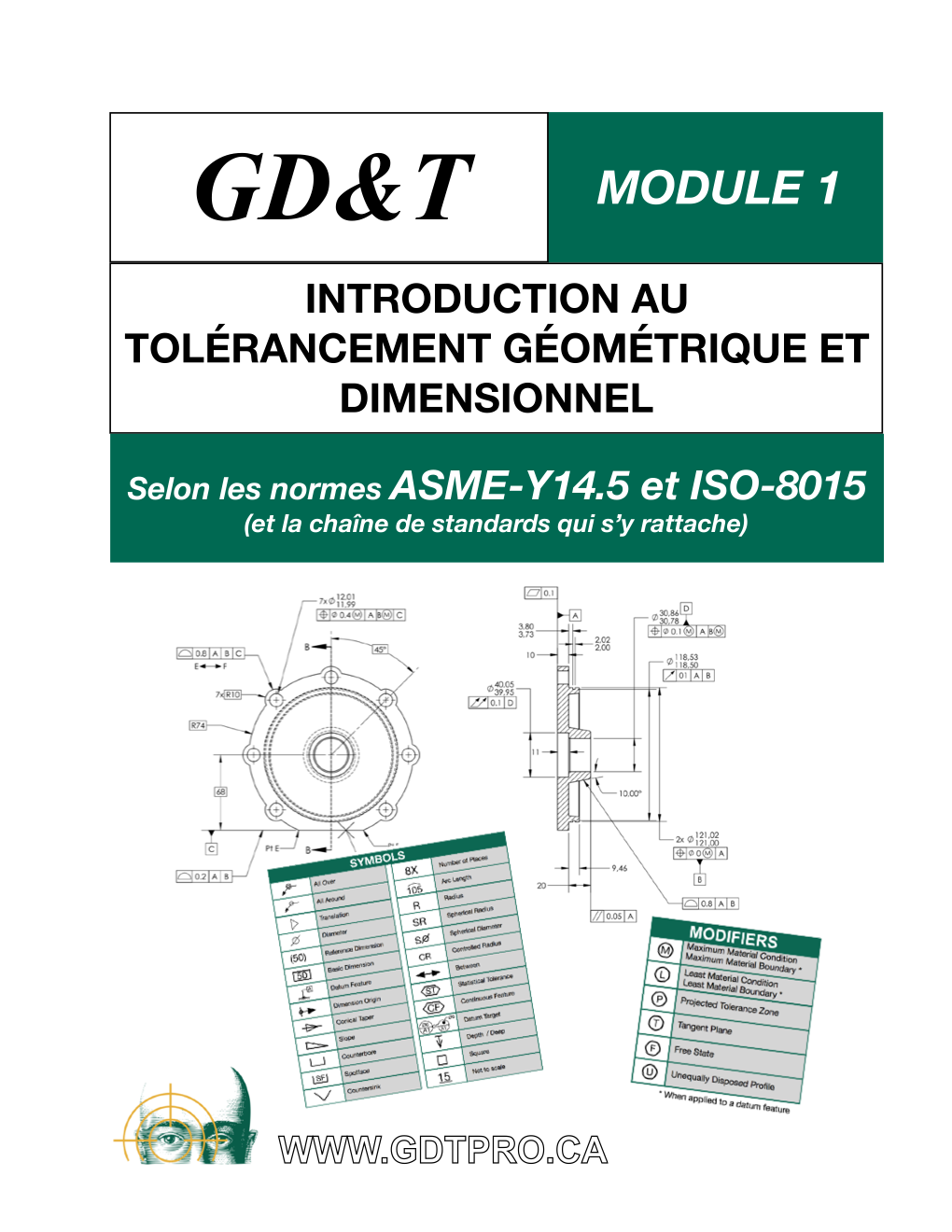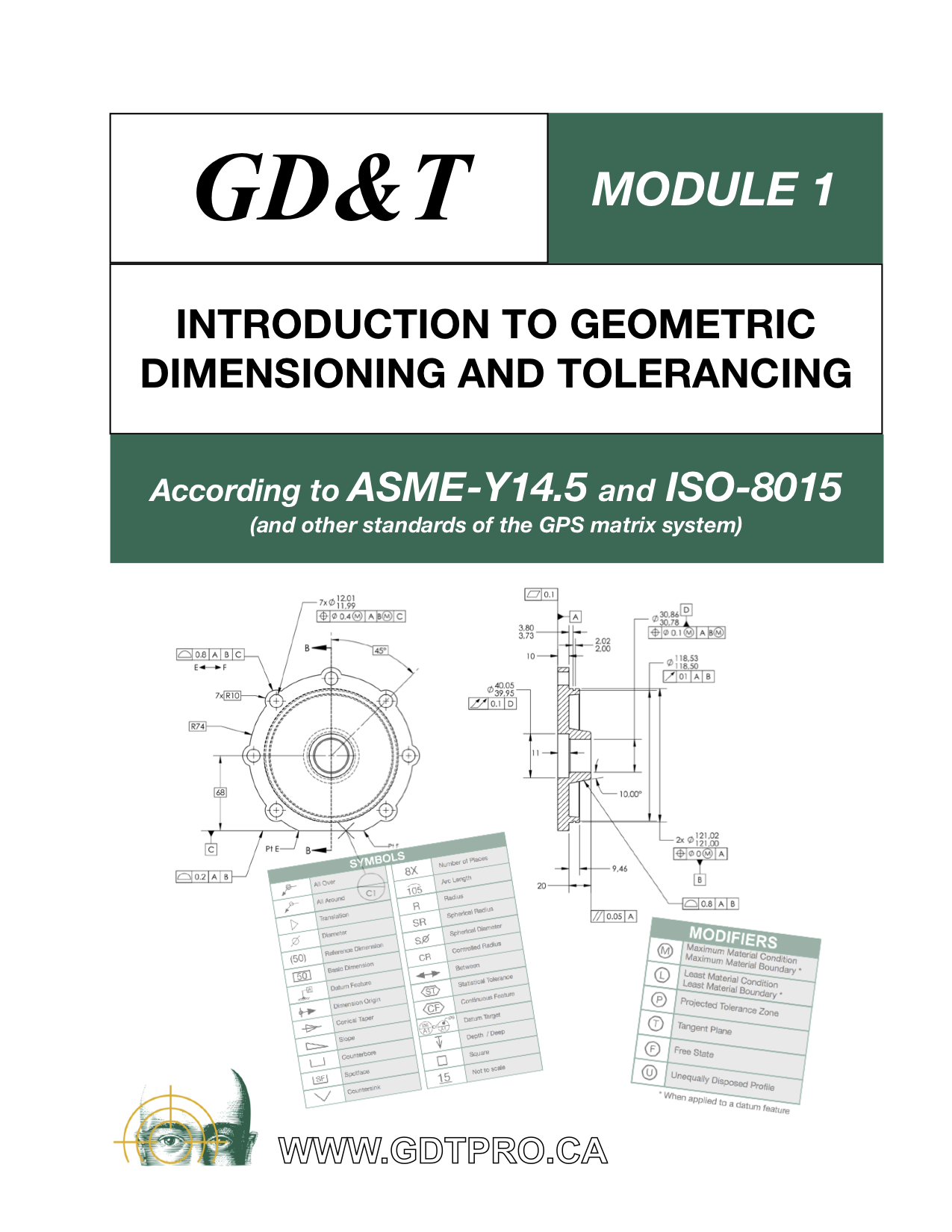[:fr]
DURÉE DE CETTE FORMATION: 2 jours (16 heures).
PRÉREQUIS: Connaissances de base en lecture de plan.
OBJECTIFS:
- Introduire les participant(e)s aux notions fondamentales sur les tolérances dimensionnelles et géométriques selon ASME-Y14.5.
- Comprendre l’évolution des systèmes de définition des pièces de production, du début de la fabrication en série à aujourd’hui, et la place qu’occupe le GD&T dans ce domaine.
- Apprendre quand et pourquoi utiliser les tolérances dimensionnelles et/ou les tolérances géométriques.
- Introduction au tolérancement dans un système de repérage 3D.
- Connaître les différentes techniques de gestion des éléments surfaciques et des éléments dimensionnels d’une pièce.
À la fin de la formation, les participant(es) seront en mesure d’interpréter correctement les informations contenues dans un dessin utilisant des tolérances géométriques.
CONTENU:
- Introduction générale et historique.
- Les principes de base des tolérances dimensionnelles et géométriques.
- Revue des principaux symboles (diamètre, profondeur, sphérique, cambrage, fraisage, chanfrein, …).
- Étude détaillé des principaux modificateurs (MMC, LMC, P, F, ST, …).
- Les systèmes de repérage (Datum Reference Frame), le concept de degrés de liberté, les règles de construction d’un DRF, les référentiels ciblés, etc.)
- Revue des règles d’interprétation des tolérances géométriques de forme.
- Revue des règles d’interprétation des tolérances géométriques de profil.
- Revue des règles d’interprétation des tolérances géométriques de localisation.
- Revue des règles d’interprétation des tolérances géométriques d’orientation.
- Revue des règles d’interprétation des tolérances géométriques d’alignement circulaire.
- Ateliers et exercices de synthèses.
LE CONTEXTE NORMATIF DU GD&T
« GD&T » est un acronyme pour « Geometric Dimensioning and Tolerancing », le terme utilisé par la norme ASME-Y14.5 pour désigner un système de définition de produits, basé sur le contrôle des surfaces, et des éléments dérivés des surfaces, dans un système de définition 3D. L’équivalent, dans l’univers ISO, est désigné su l’acronyme « GPS » pour « Geometric Product Specification ». Typiquement, le GD&T est un standard américain, tandis que le GPS est un standard international.
Bien que la symbologie utilisée dans les deux standards présente de fortes similitudes, il existe des différences majeures dans les principes fondamentaux les régissant. Une personne formée au standard ASME peut faire des erreurs d’interprétation importantes en lisant un dessin ISO, et vice-versa, plus particulièrement dans la gestion des éléments dimensionnels groupés. Nous offrons une formation spécifique sur les différences entre les deux systèmes.
Ces standards sont composés de symboles et de règles d’interprétation strictes, permettant, entre autres, de propager vers des dessins 2D des requis fonctionnels provenant du niveau assemblage 3D, par exemple pour obtenir l’interchangeabilité totale et aléatoire des pièces dans les produits.
CLIENTÈLE VISÉE:
Le Module 1 s’adresse à un large auditoire, car il est un pré-requis pour les autres formations. Typiquement, cette formation s’adresse aux techniciens, dessinateurs, concepteurs, inspecteurs, machinistes, ingénieurs, monteurs, acheteurs et toute personne devant, dans la cadre de son travail, interpréter des dessins techniques de pièces mécaniques issues de divers procédés.[:en]
TRAINING DURATION: 2 days (16 h).
PREREQUISITE: Basic knowledge in blueprint reading.
« GD&T » is an acronym for “Geometric Dimensioning and Tolerancing.” It is defined in standard “ASME Y14.5” and maintained by the American Society of Mechanical Engineers.
Because dimensional tolerances apply independently one from another, with no reference system to control the variations between features, it is difficult or even impossible to evaluate with accuracy the final form of the parts, or the interaction between parts at assembly.
GD&T was initially developed to address this problem. It introduces the concept of 3D reference systems in the 2D drawing (the Datum Reference Frame), and symbols to control the position and orientation of geometric features in a 3D system.
However, GD&T applied by poorly trained personnel can create bigger problems than not using GD&T at all.
Poorly applied GD&T often result in:
- Functional parts that are rejected at inspection.
- Non-functional parts (do not fit at assembly) accepted at inspection.
- Cost of parts that increase when using GD&T.
- High non-quality costs.
- Difficulty to find suppliers.
- Etc.
The objective of Module 1 is to learn the GD&T tolerancing system as defined by applicable standards.
CONTENT:
- Introduction and historical overview of GD&T.
- Basic principles of GD&T and GPS (Geometric Product Specification – ISO).
- Review of basic symbols review (ex.: diameter, depth, counterbore, countersink, chamfer, …).
- In-depth review of the main modifiers (MMC, LMC, P, F, ST, …).
- The Datum Reference Frame.
- The concept of Degrees Of Freedom (DOF), datum targets, etc.).
- Interpretation and application of Geometric Tolerances of Form.
- Interpretation and application Geometric Tolerances of Profile.
- Interpretation and application Geometric Tolerances of Localisation.
- Interpretation and application Geometric Tolerances of Orientation.
- Interpretation and application Geometric Tolerances of Runout.
- Exercises.
RECOMMENDED TO:
All personnel that, in the course of their work, have to read and interpret drawings with GD&T, like technicians, engineers, inspectors, buyers of mechanical parts, and others.[:]

